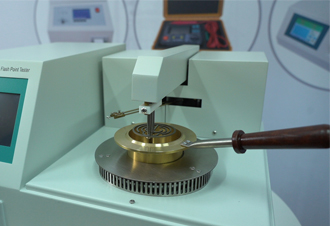 English
English


Analyzing Chemical Compounds Using HPLC and GCMS Techniques in Modern Laboratories
Understanding HPLC and GC-MS Powerful Analytical Techniques in Chemistry
High-Performance Liquid Chromatography (HPLC) and Gas Chromatography-Mass Spectrometry (GC-MS) are two of the most widely used analytical methods in chemistry. Both techniques are pivotal in a range of industries including pharmaceuticals, environmental science, food and beverage, and forensics. This article explores the principles, applications, and differences between HPLC and GC-MS, demonstrating how they complement each other in chemical analysis.
Principles of HPLC
HPLC is a technique used to separate, identify, and quantify components in a mixture. The method involves passing a liquid sample through a column packed with solid adsorbent material under high pressure. As the sample moves through the column, different compounds interact differently with the stationary phase, leading to variations in their retention times. As a result, each component is eluted at different times and can be detected by various detectors, commonly UV-Vis spectrophotometers or fluorescence detectors. This allows for both qualitative and quantitative analysis of the sample.
HPLC is particularly advantageous for compounds that are thermally unstable or of high molecular weight, making it an ideal choice for analyzing large biomolecules such as proteins and nucleic acids. Additionally, due to its ability to handle complex mixtures, HPLC finds applications in drug formulation development, quality control, and environmental analysis.
Principles of GC-MS
Gas Chromatography-Mass Spectrometry (GC-MS) combines the separation capabilities of gas chromatography with the mass analysis features of mass spectrometry. In GC, the sample is vaporized and transported through a column by an inert gas. As the sample moves through the column, compounds separate based on their volatility and interaction with the column material. Similarly, GC is used to separate the different components of a mixture, which are subsequently directed into a mass spectrometer.
hplc gcms

The mass spectrometer then ionizes the separated components and measures their mass-to-charge (m/z) ratios. This yields qualitative data regarding the compounds present in the sample as well as quantitative information when combined with calibration methods. GC-MS is highly effective for volatile and semi-volatile compounds, making it an essential tool in toxicology, environmental monitoring, and food safety.
Comparing HPLC and GC-MS
While both HPLC and GC-MS serve the purpose of chemical analysis, they do so under different conditions and with varying capabilities. One key difference lies in the physical states of the samples they analyze. HPLC is primarily used for liquid samples, while GC-MS is geared towards gaseous samples or volatile liquids. This means that GC-MS has limitations regarding the analysis of heavier or thermally unstable compounds, which are better suited for HPLC.
Another difference is in sensitivity and specificity. GC-MS often provides higher sensitivity and specificity compared to HPLC alone. However, when HPLC is coupled with mass spectrometry (HPLC-MS), the sensitivity gap can be bridged, allowing for detailed analysis of complex samples.
Applications and Synergy
HPLC and GC-MS often complement each other in a typical analytical laboratory. For instance, in pharmaceutical analysis, HPLC is frequently employed to separate and quantify drug formulations, while GC-MS is utilized to confirm the identity of the active ingredients and detect impurities. Moreover, in environmental studies, HPLC can analyze water samples for non-volatile pollutants, while GC-MS can identify volatile organic compounds.
In conclusion, HPLC and GC-MS are invaluable analytical techniques in modern chemistry. Understanding their principles, applications, and differences enables chemists to choose the most appropriate method for their specific analytical needs. As technologies evolve, the integration of HPLC and GC-MS will continue to enhance the accuracy and efficiency of chemical analysis across various fields.
-
Differences between open cup flash point tester and closed cup flash point testerNewsOct.31,2024
-
The Reliable Load Tap ChangerNewsOct.23,2024
-
The Essential Guide to Hipot TestersNewsOct.23,2024
-
The Digital Insulation TesterNewsOct.23,2024
-
The Best Earth Loop Impedance Tester for SaleNewsOct.23,2024
-
Tan Delta Tester--The Essential Tool for Electrical Insulation TestingNewsOct.23,2024





